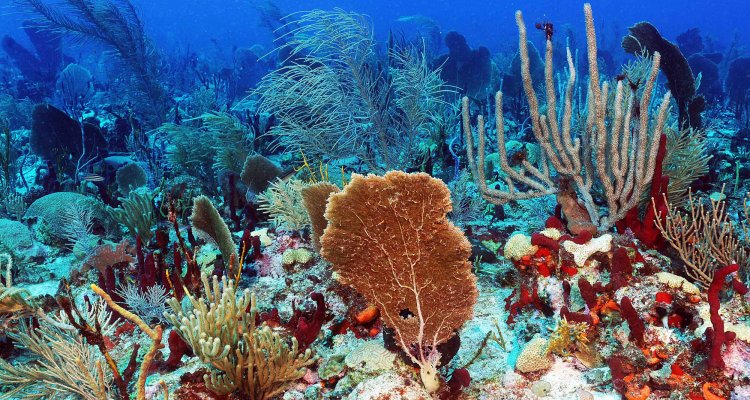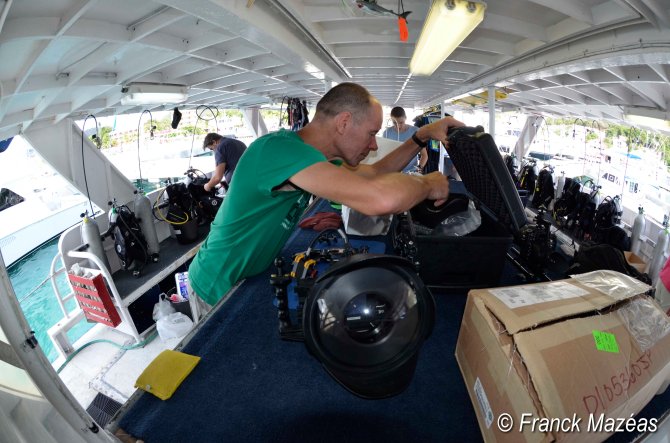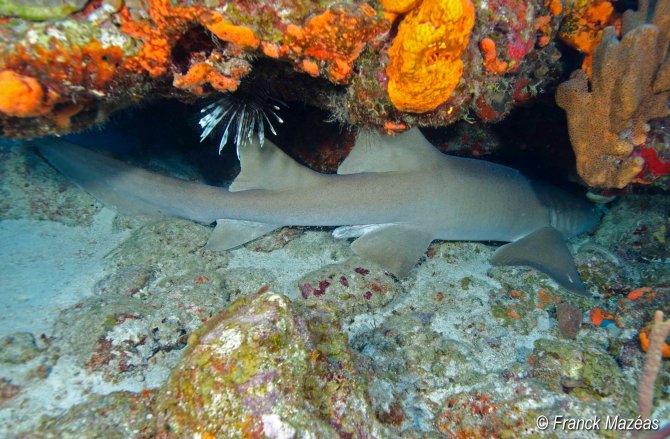
In the spotlight
Protecting the Saba Bank
At 2700 square kilometres, the Saba Bank is the biggest national park in the Kingdom of the Netherlands. Wageningen is researching the health of this ‘marine rainforest’ as well as measures for managing it.
The Saba Bank is an underwater mountain situated southwest of Saba Island, an island in the Dutch Caribbean which was named a special municipality of the Netherlands in 2010. The protected area is bigger than the Wadden Sea in the Netherlands. The Saba Bank is under protection because of its great biological richness, containing over 100 square kilometres of coral reef. By way of comparison, Bonaire has less than 10 square kilometres of coral reef. There is a wide diversity of sponges, algae, sea mammals and fish, including many shark species. This biological diversity is due in part to the fact that, in addition to coral reefs, the bank has other ecosystems such as large algal fields, expanses of sand and zones that are dominated by calcareous algae. The Saba Bank is economically important for Saba because of the lobster and red snapper fishery.
Pursuant to international treaties, the Netherlands is obliged to provide good protection and management of this biodiversity hot spot. Because of its location in the Dutch Caribbean, however, the Saba Bank is not covered by European conservation agreements and receives very little funding compared to Natura 2000 sites in the Netherlands.
Our knowledge of the Saba Bank is far from complete
From a scientific perspective, little is known about how the various ecological habitats function and how they are related to each other. The map is still largely blank. ‘In terms of surface area, the Saba Bank is comparable to the Province of North Holland, but it is as if we have only taken a good look at the cities of Den Helder and Amsterdam. We know every square metre, so to speak, of the nature parks in the Netherlands. We discovered whole new ecosystems on the Saba Bank in the past year,’ says Assistant Professor Lisa Becking of Wageningen University & Research. Becking researches tropical marine ecology and population genetics at the Marine Animal Ecology Group of Wageningen University & Research.

Over the past few years, Erik Meesters, senior researcher in the Tropics Team of Wageningen Marine Research, has studied the health of the coral reef and the fishery in the area, among other topics. His findings reveal that the coral layer on the Saba Bank is a good deal lower than it was in the 1990s. Fishery research shows that the population and landings of lobster and deep-sea snapper were probably lower in the period from 2012 to 2015 than they were in 2000. Research has also been launched into marine mammals and sharks. The tracking of sharks using transmitters has revealed that nurse sharks are very sedentary on a very small scale, and that Caribbean sharks are often just as sedentary, though they also traverse several larger areas.

Erik Meesters, of Wageningen Marine Research, says, ‘By cultivating and releasing fast-growing and relatively resilient coral species, a new habitat for fish and other animals will also be created in the reef.’
It has also been revealed that the Saba Bank is of regional importance. Prevailing currents distribute larvae and seeds from the bank throughout the entire Caribbean region. In this way, the Saba Bank contributes to the reefs around the surrounding islands and thus to revenue from fishery and diving tourism. In addition, the Saba Bank is important as a reference point to which other coral reefs can be compared, since these can still be considered relatively undisturbed. This is because the area is far enough away from large land masses and islands to escape the effects of pollution. It is not affected by any rivers carrying waste water or by soil erosion.
The greatest threats to the Saba Bank are climate change and the acidification of the ocean. In the short term, the effect of climate change is mainly evident in overheated seawater resulting from El Niño, a natural phenomenon that disrupts winds and currents. This warm water can have disastrous consequences on coral. It had a severe impact on the Great Barrier Reef in Australia last spring, possibly killing 40 to 60 per cent of the local coral. The coral loses its colour and becomes bleached because the algae with which it lives in a symbiotic relationship die, resulting in the death of the coral as well. The Saba Bank is also still recovering from a period of excessively warm water. As Erik Meesters explains, ‘The coral layer was higher twenty years ago than it is now. There was also a period of very warm water in 2005. Coral can take decades to recover.’
Acidification of the ocean is the result of an increase in CO2 in the atmosphere. The higher acidity of the water eats away at the skeleton of the coral. Meesters says, ‘It is possible that we have already lost coral as a result.’